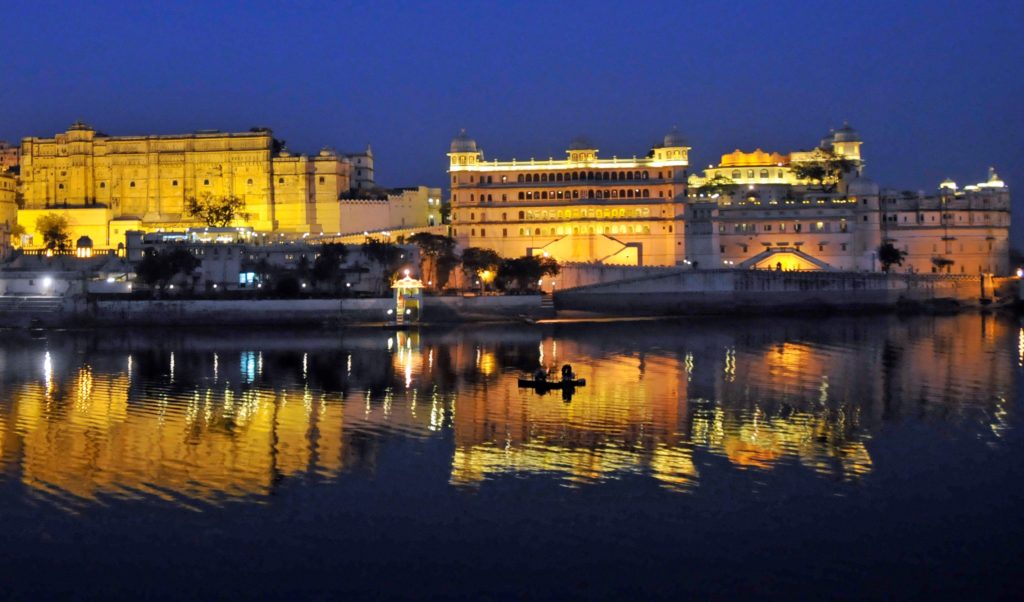
The City Palace of Udaipur is the largest palace in Rajasthan, an Indian state named for its rajas (kings). The palace was the site of a tragedy involving a beautiful princess and a cup of poison.
Maharana (or Maharaja) Udai Singh II, a Hindu ruler in northwest India, decided to move the capital of his empire to a site more resistant to Mughal attacks. In 1553, he began building a granite and marble palace and administrative center on a ridge above Lake Pichola, created in 1362 to provide water for area residents. Over the next 400 years, 21 succeeding maharanas of the Mewar Dynasty continued building on the site, named Udaipur after its founder, eventually creating a complex of 11 palaces encompassing five acres. The palaces are linked by an elaborate façade more than 800 feet long, featuring cupolas, balconies and turrets, and are connected internally by winding passageways designed to thwart attackers.
In 1810, Princess Krishna Kumari, the 16-year-old daughter of Maharana Bhim Singh, a descendant of Udai Singh, killed herself in the palace by ingesting poison to prevent a fierce rivalry between her suitors from turning into a war that would destroy her father’s empire. Notwithstanding her sacrifice, Bhim Singh was soon forced to relinquish sovereignty to the British in exchange for their protection. When India gained its independence in 1947, members of the Mewer family retained ownership of the Udaipur City Palace, where some family members still reside. The family converted portions of the palace into luxury hotels and opened other sections to tours. Among the areas open to the public are the colorful Mor Chowk (Peacock Courtyard), featuring beautiful mosaics of peacocks made from thousands of pieces of green, blue and gold glass, and the exquisitely furnished Krishna Vilas room, said to be where Krishna Kumari died.
Comments are closed.